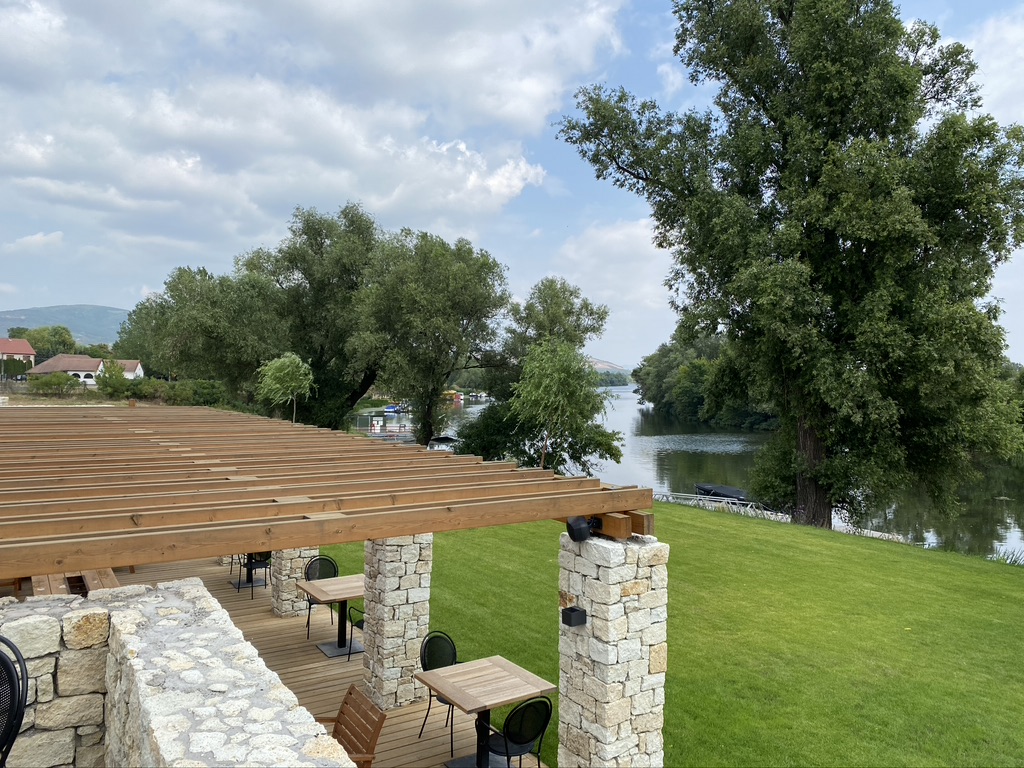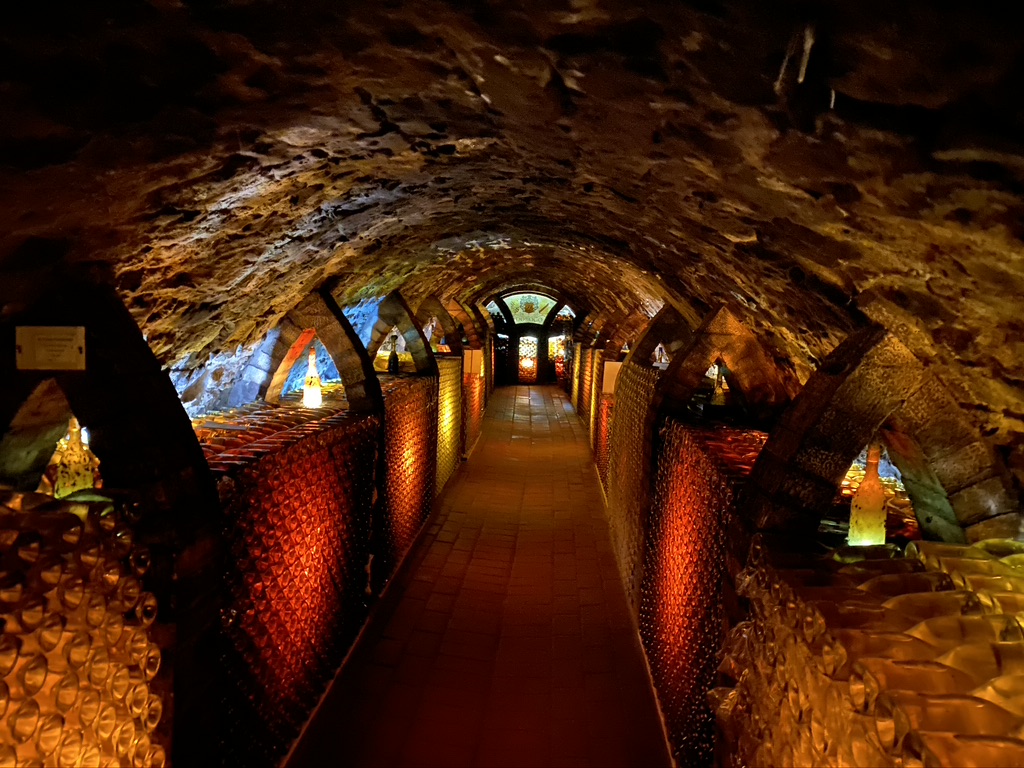Imbibing a glass of Tokaji wine is akin to sipping through the pages of an antiquated manuscript, as the wine region boasts an illustrious history artfully interwoven with royalty, innovations, and a timeless legacy.
We already collected the characteristics of Tokaji Aszú and Tokaji Szamorodni which are usually refered as Tokaji wine, however these are the sweet ones only and there is a wider and wider selection of dry wines too. Also we published entries about Furmint and Hárslevelű, the two most important varieties of the region and now we are publishing a new entry about the history of Tokaj and tokaji wine.
Tokaj wine region during the early times: 1000s-1500s
After the Tartar invasion, King Béla IV invited the Italian-speaking vine growers to settle in the hamlets of Olaszi (Bodrogolas), Sárospatak, Tállya and Liszka (Olaszliszka). They laid the foundations of the mountain region’s world fame, bringing the famous grape varieties of their homeland further south (or west) and their more developed wine culture. One of the most prominent Hungarian grape varieties, Furmint may also have French or Italian.
The sudden emergence of aszú production and the adoption of grape varieties suggest that after the Mohács battle (1526), vintners who had fled the region also came from the Szerém wine region (Famous southern wine region of Hungary – now located in Croatia and Serbia)
Legend of Tokaji wine and Establishment: 1500s – 1600s
According to legend, the production of aszú wine was invented in the mid-1650s by Máté Laczkó Szepsi (note the name as one of the most prominent contemporary winemakers in the region – István Szepsy – bears the same name), court priest of Zsuzsanna Lorántffy (the wife of I György Rákóczi – Prince of Transylvania). He made the first nectar from the grapes of the princess’s Oremus vineyard in Újhely (Sátoraljaújhely) and surprised his mistress with it as Easter wine. However, this story was refuted by historian István Zelenák it is still widespread in Hungary.
The same historian has found a document proving that aszú wine was known long before Máté Laczkó Szepsi. Máté Garai died in 1571, and in his letter of inheritance, he mentions several barrels of ‘Asszú Grape Wine’. In the 1600s, producers started to use the “puttonyos” system. The “puttony” is a backpack used to carry the harvested grapes to the place of processing or storage.
The number of puttonys is the number of cca. 25 kg of crushed aszú berries to a barrel of must, traditionally 136 liters (Gönci barrel).
Golden Age of Tokaj wine: Late 1600s – 1700s
Tokaji wines entered their golden era in the late 17th and throughout the 18th century. II. Ferenc Rákóczi, the Prince of Transylvania and the leader of an anti-Habsburg uprising and the War of Independence between 1703-1711, used Tokaji wine as a means of international diplomacy while he was seeking allies against Habsburgs. So he sent Tokaji wine to the French court with his diplomatic envoy.
Thus, French royalty ardently cherished Tokaji, gaining epithets such as “Wine of Kings, King of Wines” by Louis XIV.
In 1737, the world’s first vineyard classification system was established, preceding the renowned Bordeaux Classification by over a century. Tokaj’s vineyards were categorized based on their propensity to produce top-quality aszú berries, laying the foundations for the region’s global acclaim.
Royal Courts and Noble Houses
Tokaji wines have enjoyed admiration from numerous royal courts and noble houses across Europe. The legendary sweetness and complexity of Tokaji Aszú mainly have found favor among monarchs and nobility, including Louis XIV of France, Peter the Great of Russia, and Queen Victoria of England.
Imperial Russia’s Adoration
In the courts of the Tsars of Russia, Tokaji was held in exceptional esteem. It was a favored drink, a status symbol, and a cherished import. The Russian nobility’s affinity for Tokaji wines was so potent that it significantly influenced trade and diplomatic relations between Hungary and Russia.
Tsar Peter I was also a great lover of Tokaj wine and received several barrels of it from Ferenc Rákóczi II, who tried to persuade the Tsar to support his struggle against the Habsburgs.
We know that Peter the Great’s successors were also very fond of Tokaj aszú, and in 1733, he set up a Wine Buying Committee, which until 1798 ensured at the highest level that the Russian Tsar’s court always had sufficient quantities of Tokaj aszú.
The dissolution of the Wine Buying Committee in 1798 and the almost simultaneous end of Polish statehood plunged the Tokaji producers into crisis, and they had to look for other markets.
Jewish Heritage and Kosher Tokaji
From the 16th century, many Jews who had fled from Germany and northern Italy settled in southern Poland and Galicia. They also needed kosher wine to meet the requirements. Our nearby northeastern wine regions provided the solution. In the 16th and 17th centuries, Polish and Galician Jews began to come to Tokaj-Hegyalja at harvest time and make wine there, which they then took to Krakow and other cities. The first mention of kosher wine production is found in a letter (1609) from people in Kassa (now Kosice in Slovakia), who complained that Poles and Jews were coming to Tokaj-Hegyalja to buy grapes. By the end of the century, the reputation of Tokaj wine had spread to the Jewish communities. The renowned Talmud commentator Yaakov Emden praised its inimitable golden yellow color and unique aroma (1697-1776).
The process of making kosher Tokaji differed from that of ‘ordinary’ wine in only a few points. The harvesting can be done by anyone, right down to the pressing, i.e., treading. This operation required religious Jewish people who had already kept the Sabbath. The cleanliness of the vessels used to handle and age the wine was also a requirement. The must was always filtered into new barrels, and the wine was aged in new barrels in kosher cellars. Nowadays, kosher wine is again being produced in the Tokaj wine region. The stomping process has been replaced by machines, but even today, only religious Jews can put the grapes into the press, and only they can handle the buttons.
Today, large crowds of people make annual pilgrimages to the tomb of the Wonder Rabbis in Bodrogkeresztúr.

In the Pens and Palates of Writers and Critics
Besides tzars and kings, Tokaji has also made its mark in international literature and wine critique. Noted writers and critics, from the French Brillat-Savarin to the British Hugh Johnson, have extolled its virtues, spreading its fame across borders and generations.
The great German poet Goethe even wove the reputation of Tokaji wine into his Faust.
Among musicians, Mozart was reputed to have made Tokaji one of his favorite drinks.
Struggles and Resurgence: 1860s – 1990s
The late 1800s brought phylloxera, a grapevine pest, causing havoc across Europe’s vineyards, and Tokaji was no exception. Despite facing devastation, the region resiliently reconstructed its vineyards, though often with alterations in the grape varieties planted. Furmint solidified its position as the dominant variety after phylloxera due to its remarkable acidity and botrytis affinity.
The 20th century presented its tribulations, particularly during the World Wars and the subsequent communist era, which suppressed individual innovation and directed production towards quantity over quality. However, the fall of communism in 1989 catalyzed a renaissance in Tokaji wines.
Modern Epoch: 2000s – Present
The dawn of the 21st century beheld the rejuvenation of the Tokaji wine industry with the infusion of investments, technology, and a renewed focus on quality and tradition. Regulations were refined to safeguard the integrity of Tokaji wines, and winemakers sought to preserve time-honored techniques and innovate. Adopting modern winemaking technologies and practices enabled winemakers to amplify the inherent quality of their terroirs and grape varieties, propelling Tokaji wines to regain their esteemed position on the global stage.
In the contemporary era, figures like István Szepsy, István Balassa and companies like Oremus, Dobogó and Royal Tokaji have been integral in revitalizing and preserving the rich traditions of the Tokaji wine region. Through their unwavering commitment, innovative practices, and respect for legacy, they have enabled the stories of Tokaji wines to be shared and savored by a new generation of global wine enthusiasts.
Tokaji wines encapsulate not merely the flavors and aromas of a region but the essence of its struggles, triumphs, and perpetual journey toward excellence. Every drop carries echoes from the past, whispering tales of royal feasts, vineyard rebirths, and the persistent spirit of the vintners who have, across centuries, crafted this liquid history.
Tokaji in Hungarian History: A Symbol of Pride and Prosperity
Tokaji wines have not only been a source of national pride for Hungary but have also intricately intertwined with its history, culture, and economy. In politics and society, Tokaji has been a symbol of Hungary’s viticultural prowess and a tool of diplomacy. Many Hungarian kings and leaders have utilized Tokaji wine to fortify alliances, enchant foreign dignitaries, and showcase the nation’s cultural wealth.
Moreover, during various historical epochs, the Tokaji wine industry has been a significant economic driver, providing livelihoods to thousands and contributing to the national treasury. Tokaj’s vineyards, wineries, and cellars have endured through periods of prosperity, struggle, and rebirth, mirroring the trajectory of Hungary itself.
Legal Protections and Appellations
Various legal frameworks and appellations have acknowledged Tokaji wine’s distinction internationally. The rigorous standards for what can be labeled and sold as Tokaji are not merely a national matter but are recognized in the European Union’s PDO system and various trade agreements worldwide.
Global Markets and Modern Connoisseurs
In contemporary times, the global wine market has witnessed a resurgence of interest in sweet and botrytized wines, where Tokaji has re-established its stance, not only as a historical relic but as a dynamic, versatile wine that speaks to modern palates and cuisines around the world.
In essence, Tokaji wines, with their luscious sweetness, vivid acidity, and rich history, have traversed beyond the Hungarian borders, weaving a global tapestry that links nations, cultures, and histories. This liquid gold does not merely represent a wine style or a region but stands as a symbol of Hungary’s resilience, artistry, and celebrated heritage globally.
Cover photo: Tokaji sweet wines laid in Dobogó Winery.

